From Flowers to Foliage: Your Ultimate Fall Planting Guide
Amber leaves, golden blooms, scarlet shrubs — nothing says ‘fall’ like an abundance of nature’s most brilliant colors.
“Fall is a great time to plant and relax outside while working in the garden,” says Andy Grondalski, Nursery Manager at Sixteen Acres Garden Center in Springfield, MA. While it’s a common misconception that you can’t plant in the fall, the cooler climate is ideal for a wide array of flowers and foliage.
This fall planting guide will show you a variety of flowers, trees and plants that will add festive hues and textures to your landscape, while complementing natural stone hardscape features.
Flowers
Fall flowers can brighten flower beds and planters with vibrant pops of color long after the final days of summer. Chrysanthemums, marigolds, and goldenrod are popular favorites during the cooler months.
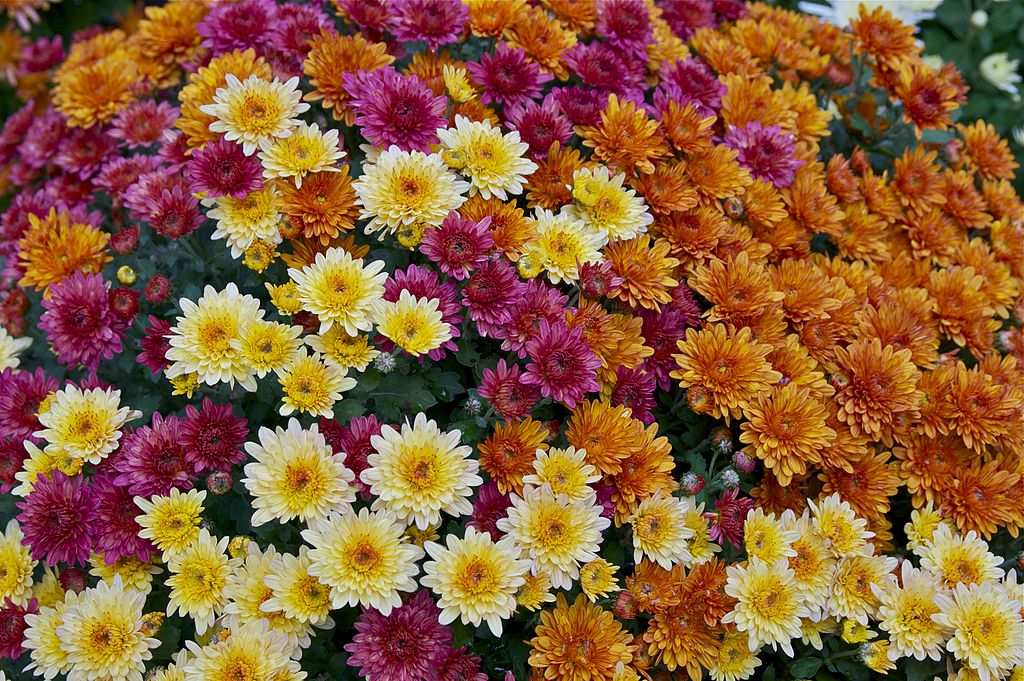
Different colors of chrysanthemums
Grondalski says Chrysanthemums (often called “mums”) are the most popular fall annual, and he often recommends them to customers as a low-maintenance option. They are available in a wide array of colors like yellow, pink, orange, and maroon. For best results, plant mums in flower beds or containers and make sure to water them adequately.
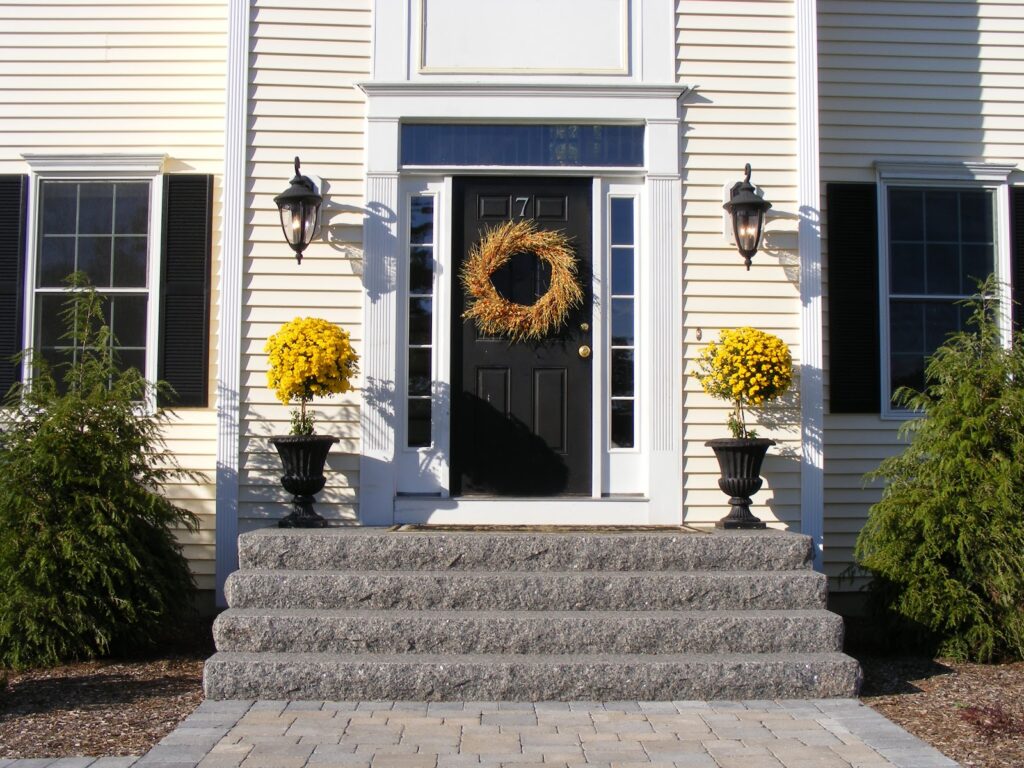
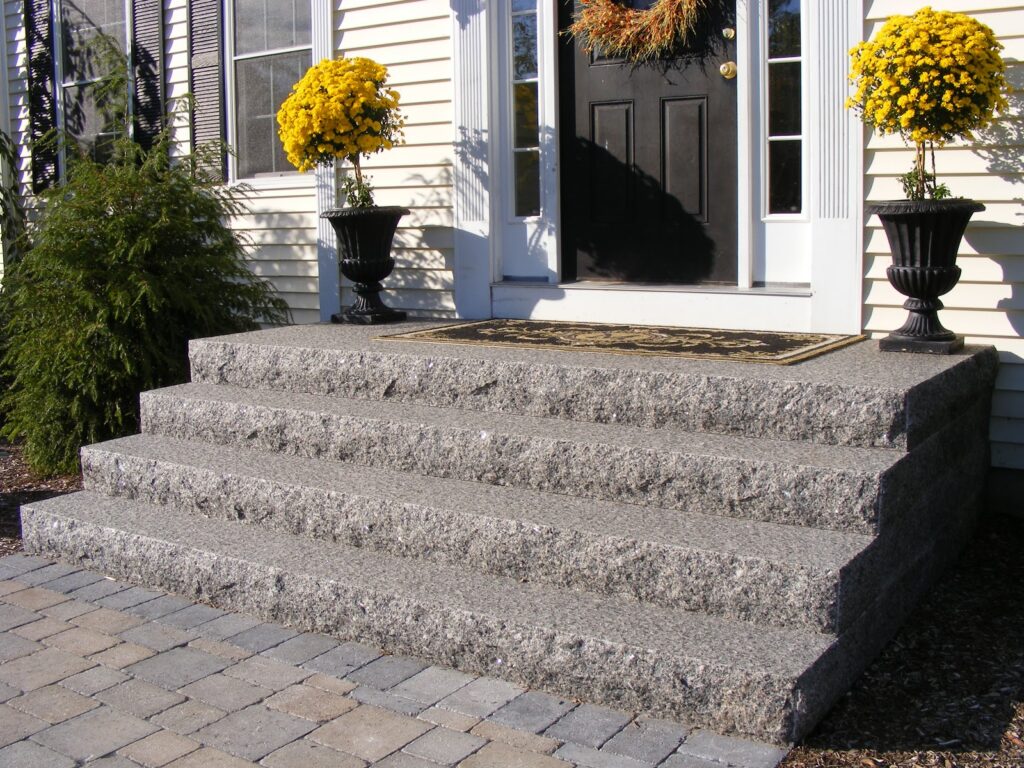
Gold chrysanthemums and Caledonia granite steps create a welcoming entrance.
Marigolds are another excellent option for fall, available in an assortment of deep red, orange and gold varieties. They are perfect for lining a driveway or decorating an outdoor space in flower pots or beds.
Goldenrod is a seasonal staple named for its distinct gold color. Its soft texture gives it the versatility to complement other flowers or stand on its own. Some types of goldenrod can be invasive, so we recommend planting less aggressive species like Golden Baby and Dwarf goldenrod.
Just because summer is over doesn’t mean lively, vivid plants are no longer in season. Hydrangeas, especially the mophead and panicle variety, are perfect for planting in the fall. From September to early October, their white or blue blooms appear even brighter against the red and gold foliage.
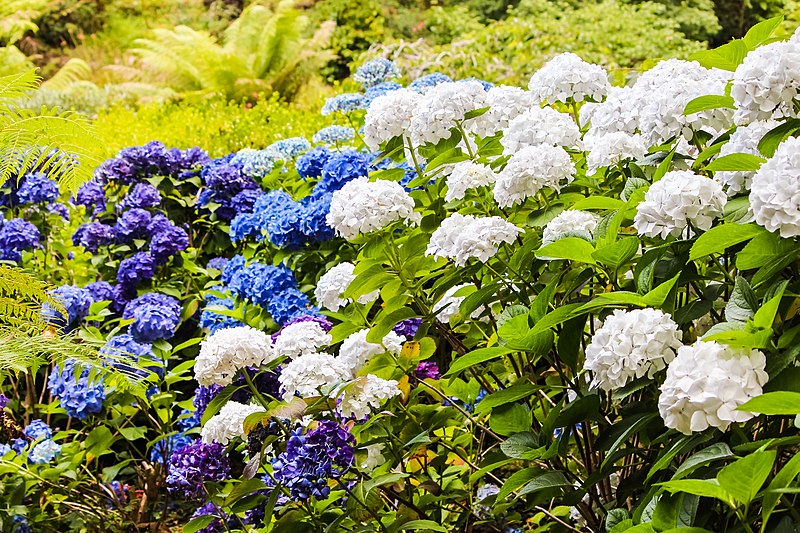
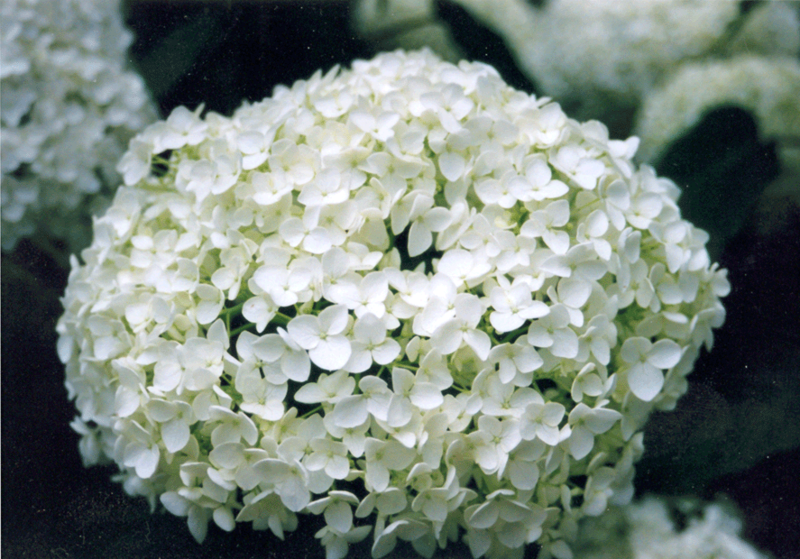
Hydrangeas
Asters come in shades of pink, lilac, and deep purple and thrive when planted in autumn weather. Pansies also prefer a colder climate and will bloom until frost. Other annuals for fall planting include begonias, petunias, sunflowers and sweet alyssums.
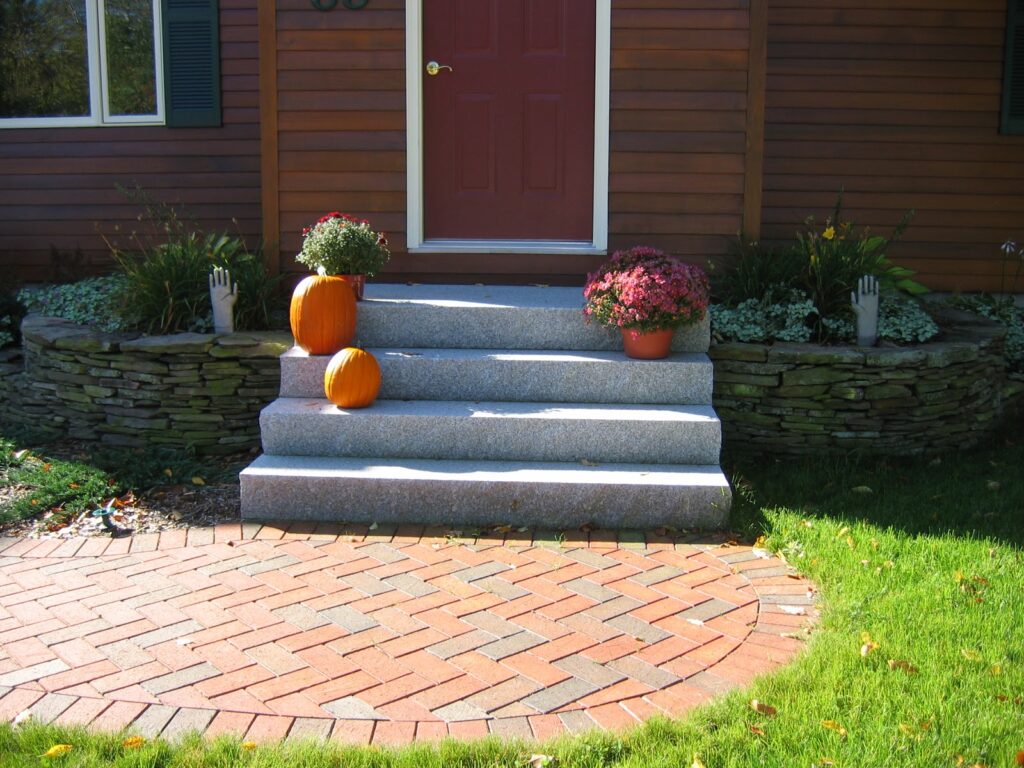
Deep purple mums and festive pumpkins pop against a set of Woodbury Gray granite steps and a weathered fieldstone decorative wall. Project by Seoane Landscape Design.
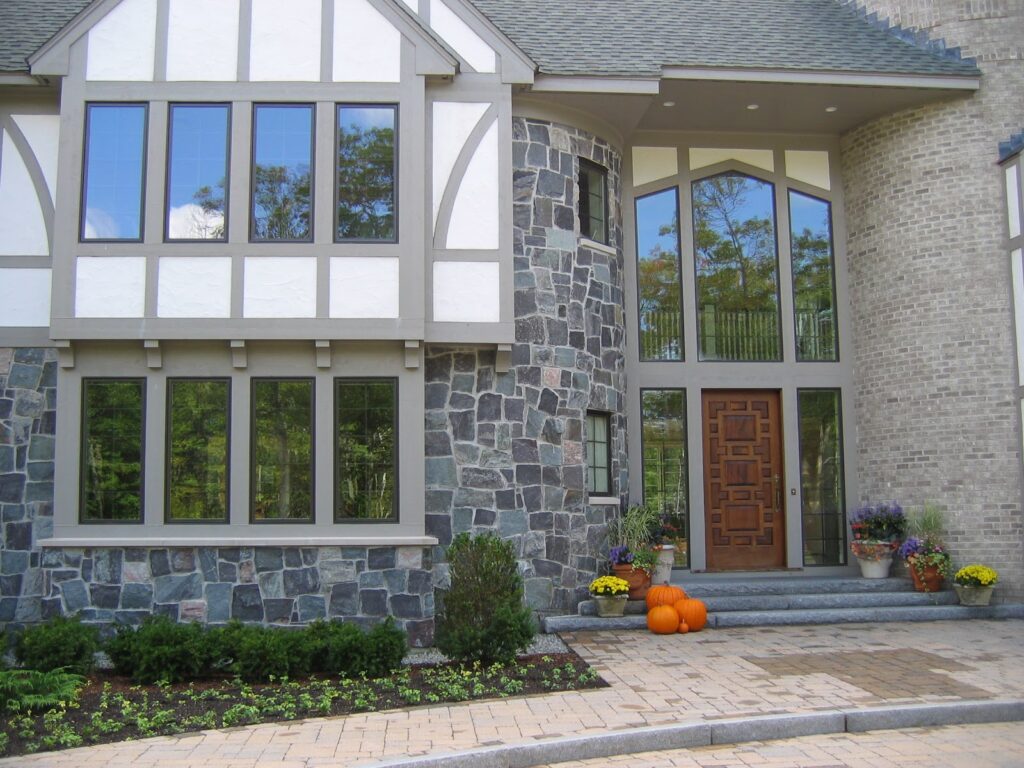
Gold mums, salvias and pumpkins add a touch of autumn to this landscape. The steps are Woodbury Gray granite. The curb is Concord Gray granite.
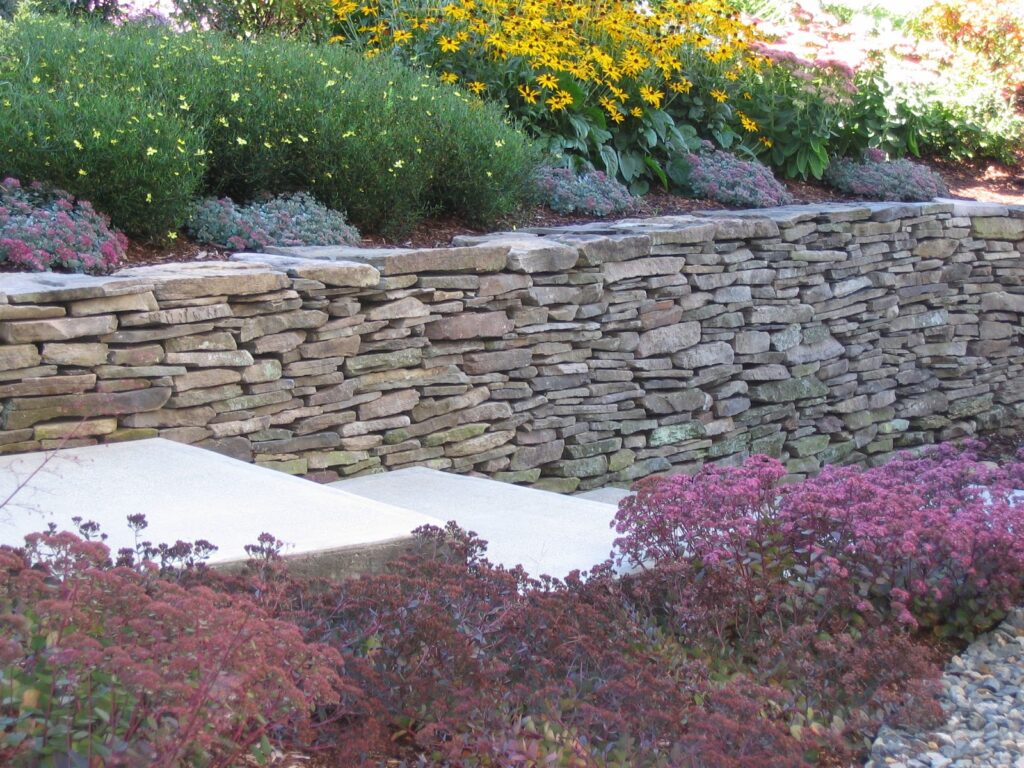
Yellow black-eyed susans and purple sedums complement this thin weathered fieldstone retaining wall.
Trees and Shrubs
“Fall is an excellent time to plant trees and shrubs,” says Grondalski. “The weather is cooler, moisture stays in the ground a bit better, and a lot of root growth starts to happen.”
It is also easier to transplant new trees due to ample rainfall, which facilitates root growth. To help retain even more moisture in the soil, homeowners can mulch with wood chips.
According to Grondalski, trees and shrubs are a great low-maintenance option for homeowners who want to add visual interest without needing to water or fertilize regularly.
Maple tree varieties, like the Japanese Maple and Sugar Maple, are widely known for their fiery orange and red autumn leaves. Other trees to plant in the fall include alder, crabapple, sycamore and spruce. Bushes like sumac and fothergilla are popular seasonal favorites as well.
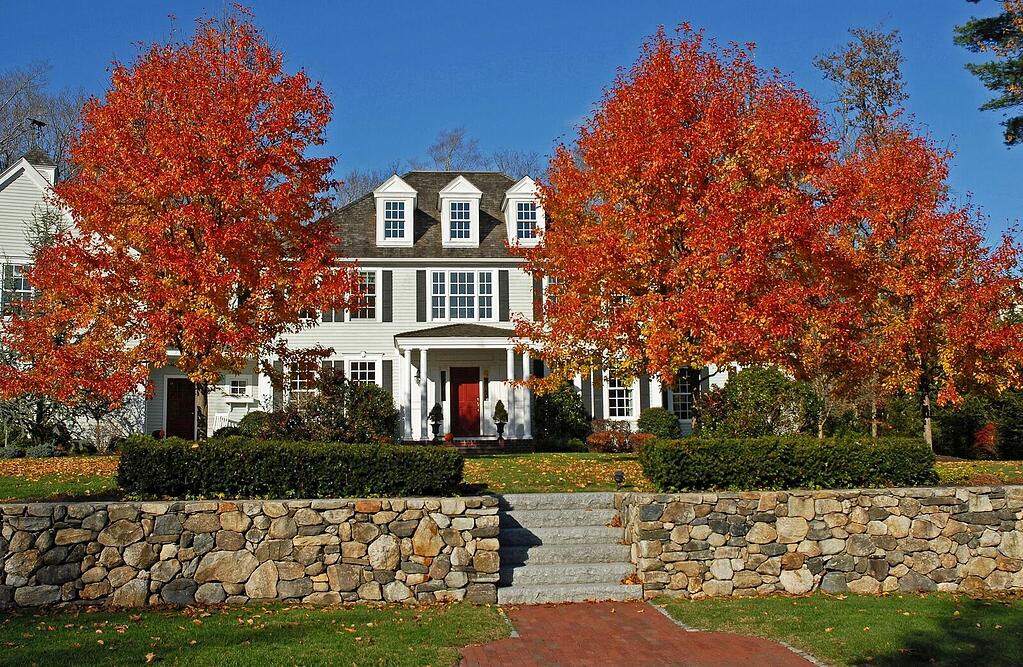
Maple trees, Woodbury Gray granite steps and New England Style wallstone add color and curb appeal to this colonial home. Project by Seoane Landscape Design.
Vegetables
You can harvest home-grown meals all season long by planting vegetables that thrive in the fall. Vegetables like lettuce and spinach mature quickly and can be planted later in the season. Other garden vegetables that flourish in the fall include snow peas, carrots, brussel sprouts, broccoli and radishes.
Some of the most popular vegetables to plant in the fall are unlikely to show up on your dinner table. Ornamental vegetable varieties have grown in popularity in recent years, and while they are not usually for eating, they are perfect for adding a unique, creative touch to your yard.
Grondalski says ornamental peppers are a popular fall favorite among customers, known for their unique shades of purple, red, and yellow. Ornamental cabbage and kale are other trendy options that have a unique, rose-like appearance and feature rich hues of green, purple and pink.
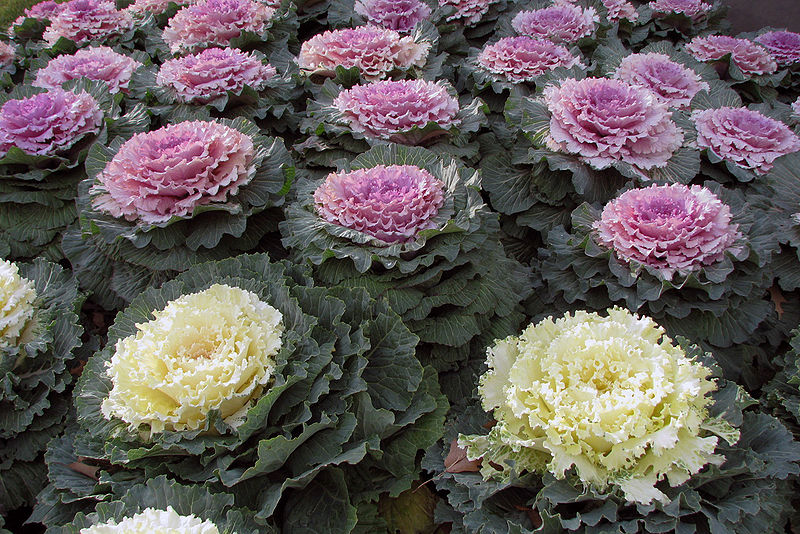
Ornamental kale
Turfgrass
After enjoying your lawn all summer long, fall is the perfect time to plant new turfgrass and catch up on lawn maintenance. While it can be difficult to grow grass in the high heat and intense sun during the summer months, fall provides a milder environment for planting and maintenance.
“Cool-season grasses like bluegrass, fescue, and perennial ryegrass thrive when planted in the fall and early winter,” explains this SFGate article. “Plant a new lawn when soil temperatures cool to 55 degrees F.”
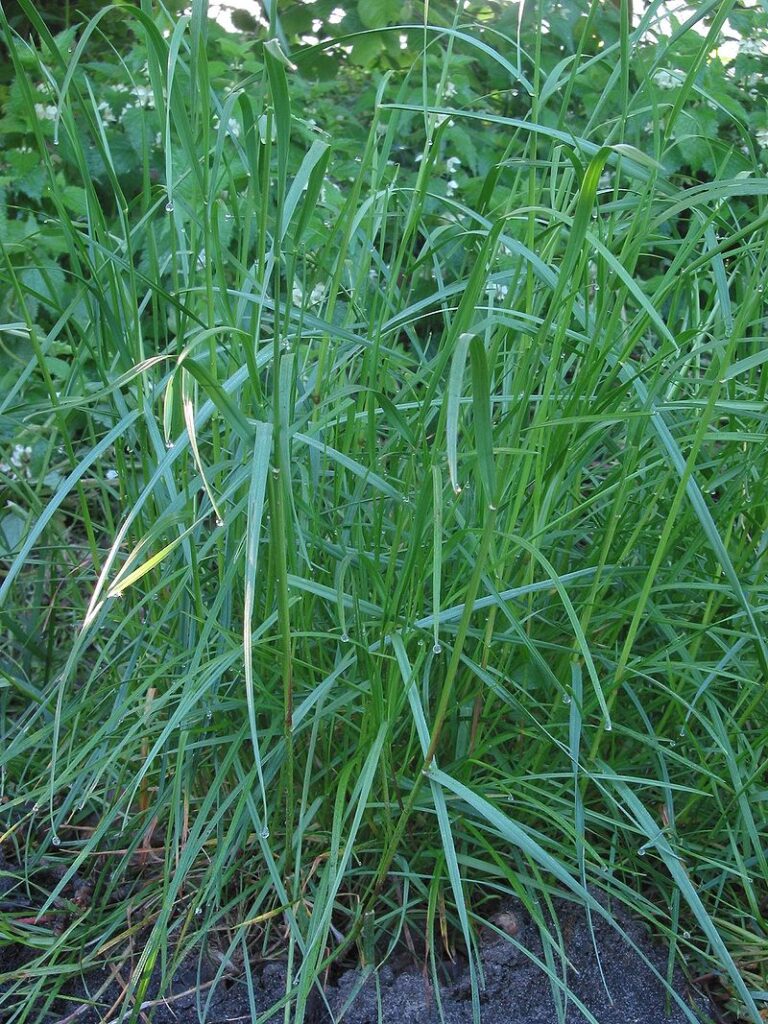
Perennial ryegrass
To maintain your lawn, fertilize cool-season varieties at least two times from September through early November.
Tips for Planting in the Fall
Planting depth and timing are critical factors to ensuring proper plant growth. “Make sure your planting depth is correct, and that there is no extra soil or mulch going up the stems of the plants,” says Grondalski. Additionally, if you wait too long to plant, poor root growth is likely and trees or shrubs may not survive the winter.
Watering is especially important to consider before the winter season. Water heavily during prolonged dry periods to prevent any root damage to plants. “You want to make sure that once the ground is frozen or freezing, it has some moisture in the ground for winter,” says Grondalski.
With proper planning, you can ensure a lovely garden and landscape all year round. Many spring bulbs such as tulips, daffodils and hyacinths should be planted in the fall approximately six to eight weeks before frost. Planting them appropriately will ensure a vibrant start to the spring season.